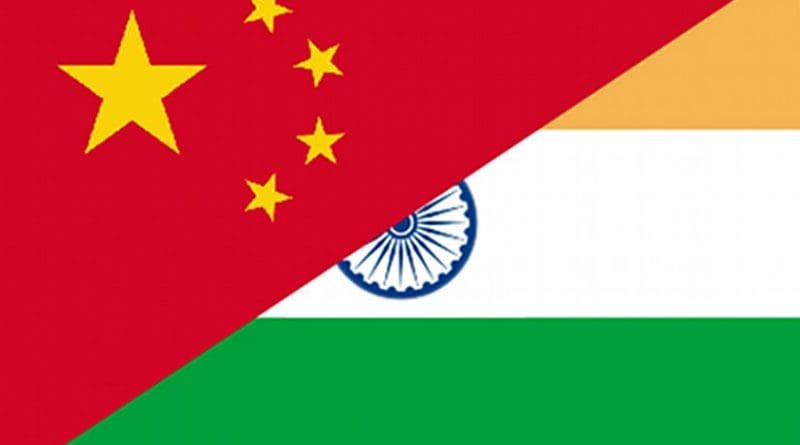Li Keqiang’s Visit To India: What Promise Does It Portend? – Analysis
The Prime Minister of China Li Keqiang who assumed office in March is arriving in India from May 19 to 21 as part of his first round of overseas visits after becoming Prime Minister. He also travels to Pakistan, Switzerland and Germany. He clubbed his visits to India and Pakistan on his way to Europe and this shows the equal importance which the newly-elected Chinese leadership attaches to China’s relations with the two countries.
Li’s visit threatened to come under a cloud following the intrusion by a platoon of PLA troops into Indian territory in the Daulat Beg Oldie area of Eastern Ladakh on 15 April and their camping in tents there for nearly three weeks. The resulting stand-off between the Indian and Chinese troops of the Indo-Tibetan Border Police (ITBP) created trans-Line of Actual Control tensions and led to demands in India for the postponement of the visit of Foreign Minister Salman Khurshid to Beijing to make preparations for Li’s visit. The stand-off also revived a distrust of China in Indian strategic circles. Ultimately good sense prevailed and diplomacy triumphed. The embarrassing postponement of the visit was averted and both agreed to restore the status quo ante. The Chinese troops vacated the Indian territory into which they had intruded.
The full motivation for China’s recent incursion into Indian territory in eastern Kashmir is as yet unclear. But the incident brings to the fore the unpredictability in Chinese foreign policy and Beijing’s frequent recourse to low-level aggression, often deployed to shape the backdrop to formal diplomatic negotiations. Despite a general trend towards deepening cooperation with India, the incident lowers hopes that China’s new leadership could move to clear up uncertainty in bilateral relations and create a firmer basis for cultural and economic exchange.
After the recent sustained focus on the disputed Senkaku Islands, the incursion is a reminder that China is involved in multiple border disputes that are connected in a dynamic fashion. Specific flashpoints will be brought into focus at different points in time. But the key question is whether Chinese behaviour should be seen within a broader strategic framework of sustained low-level aggression as a coercive force to help China realize its foreign policy objectives, both in the South China Sea and vis-a-vis India and Central Asia; or whether at times officials in Beijing themselves are surprised by the military’s more aggressive actions.
When India built infrastructure in its sight of the LOC, Beijing felt it was within its rights to discourage India from hardening its infrastructure in what it perceived as a breach of the 1962 agreement defining the LAC. Nevertheless, the incursion added to the list of Chinese uses of low-level aggression to enforce territorial claims. Given China’s conventional military strength, civilian research scope and manned and unmanned aircraft capabilities, Sino-Indian relations are clouded by the latent threat of a more sustained campaign of South China Sea-type aggression carried out in the Himalayas. In recent years, China has been keen to adopt a more assertive posture on land, sea and in the airspace around its perceived territorial periphery.
Despite recent tensions, economic cooperation between the two countries has accelerated in recent years. The potentially incendiary 50th anniversary of the 1962 conflict was constructively handled, and in March, Chinese President Xi Jinping personally endorsed a Chinese “five-point plan” to improve bilateral relations. More recently, both sides showed pragmatism to firm up mutual diplomatic visits within 24 hours of the dispute’s resolution.
Ahead of his visit to New Delhi, Li said India and China “must shake hands” to make Asia an “engine of the world’s economy”. He opined that “China and India are friendly neighbours and we are also natural partners. Both of our countries stand for amicable and peaceful relations between the countries and a multi polar world. The peaceful and friendly relations between our two countries is blessing not just to Asia but also the whole world”. But India will be naïve to fully trust what the Chinese leader says, given the recent assertiveness in regional issues and the expansion on what the Chinese have been calling their “core interests”.
Even if one agrees with Li’s assertion that linkages between the two vast markets could be a game changer and the emotional touch of his friendship with India during his childhood extended, India needs to be circumspect and cautious in responding to the Chinese overtures. Though there may not be a better alternative to diplomatic engagement to address the contentious bilateral and regional issues, India needs to be on its guard in order to defend national interests as the Chinese are not given to concede an inch ungrudgingly.
While India will look for a strategic resolution of border row with China, India must commit to a fair and reasonable solution to the border question. Both Premier Li and President Xi Jinping joined politics after the 1962 India-China war and may not be burdened by the baggage of a bellicose bilateral history. Can India take advantage of this to obtain the Chinese compliance to its arguments? Assuming the answer is in the positive, can India overlook China’s unilateral decision to build a dam on the Brahmaputra, a decision which has the potential consequence of triggering a water dispute with India? There are no easy answers to these questions. But whether on economic, political or strategic issues, India ought to inject strong diplomatic muscle to deal with the Chinese.
Rajaram Panda
Visiting Faculty, SLLCS, JNU
E-mail: [email protected]
This article was published by IPCS and reprinted with permission.

